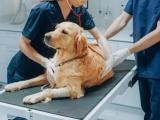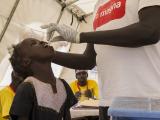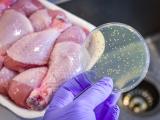May 25, 2010
Few wildlife in California farming region carry E coli O157
In a study prompted by the 2006 E coli O157:H7 outbreak linked to fresh spinach, researchers report that E coli O157:H7 is present but rare in wildlife in California's Central Coast farming region. The scientists found the pathogen in fecal samples from 20 wild birds and mammals out of 1,133 samples tested, according to a news release from the University of California–Davis. The researchers, who presented their findings yesterday at the American Society for Microbiology meeting in San Diego, collected the samples in 2008 and 2009 on 38 private properties in Monterey, San Benito, and San Luis Obispo counties. E coli was found in samples from 2 cowbirds, 2 coyotes, 5 crows, 1 deer mouse, and 10 feral pigs. Samples from several other species, including deer and ground squirrels, tested negative. Robert Mandrell of the US Department of Agriculture, the principal investigator, called the presence of pathogenic E coli in wildlife somewhat surprising. "The fact that we have identified two bird species with an incidence of E coli O157:H7 of more than 3%, feral swine with about a 4% incidence, and several coyotes and rodents that tested positive . . . suggests there are at least several sources of pathogen movement in this region," he said. But because there is no evidence of a high concentration of E coli in the samples, it's unclear how much of a risk of produce contamination the findings imply, he added. The researchers are running genetic comparisons of the wildlife E coli strains and strains from cattle, soil, and water.
May 24 UC Davis news release
FDA, NIH unveil safety reporting portal
The US Food and Drug Administration (FDA) and the National Institutes of Health yesterday launched an online portal that, when fully functional,will ease reporting of safety problems related to food and medical products. The FDA said in a statement that the Safety Reporting Portal can now be used to report problems with food and animal feed, animal drugs, and adverse events from human gene transfer trials. Most of the reporting functions are targeted to the food industry, animal drug manufacturers, and biomedical researchers, but consumers can also use the site to report safety concerns about pet foods and pet treats. FDA Commissioner Margaret Hamburg said the tool will help improve the nation's surveillance system. The FDA said the site will allow an individual to file a single report to multiple agencies that may need to be aware of a safety problem. In the future the portal will enable reporting on other types of clinical trials, beyond just gene transfers, and on a broad range of products the FDA regulates, the agency said.
May 24 FDA press release
FDA-NIH Safety Reporting Portal
Study lends support to childhood vaccine schedule
To address concerns some parents have that children receive too many vaccines too soon in early childhood, researchers from the University of Louisville explored if vaccination timing had any effect on 42 neuropsychological parameters at ages 7 and 10. The study, using data from a previous Vaccine Safety Datalink trial, was published yesterday in an early online edition of Pediatrics. The authors found that 1-year-old children who received their vaccines on time and a subset identified as having the greatest vaccine exposure did better on 12 and 15 outcomes, respectively, though in most cases the difference did not persist in multivariable analysis. No statistically significant advantages were seen in the less vaccinated children. The research group wrote that the findings might provide reassurance to parents who have concerns about vaccine timing.
May 24 Pediatrics abstract
Toronto reports 28% H1N1 vaccine reach
Toronto Public Health (TPH) reported today that 28% of its residents and 39% to 59% of healthcare workers—depending on facility type—received the H1N1 pandemic vaccine. The information is contained in two reports, the first estimating the city's vaccination rate and analyzing overall pandemic response, including problems with vaccine distribution. One such problem was the limited availability of doses till after the peak of the second wave of illness in late October. Dr. Barbara Yaffe, TPH director of communicable disease control, said in a news release, "We know that people want a better system of vaccine delivery in the event of another outbreak such as this one, and so do we." The second report detailed vaccine coverage in health workers and found rates of 39% in long-term-care facilities, 58% in acute-care settings, and 59% in continuing-care sites.
May 25 TPH news release
Report on Toronto pandemic response
Report on vaccination in healthcare workers


















